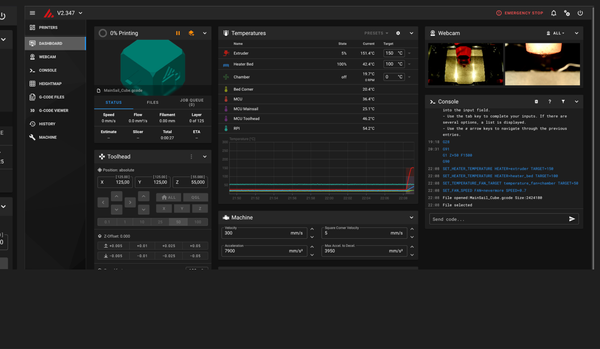What is Klipper?
Klipper is a firmware for 3D printers that unifies the power of a general-purpose computer with one or more micro-controllers. It is particularly suitable for high-speed 3D printing, being used by many high-speed 3D printers such as the Creality K1 series, Flashforge 5M, and Twotrees SK1.
The
Web browsers are essential tools for nearly all internet users today, serving as the primary means to access websites and web services. These are indispensable for all desktop, mobile, and tablet devices.
This necessitates the idea of our project, which utilizes the currently installed web browser to create and run
AnySQL is a free and open-source Lightweight, Thread-Safe, Version-Agnostic, SQL Client Implementation inspired by Databases.
Features
* Lightweight - no use of sqlalchemy or other massive frameworks
* ThreadSafe - implements threadsafe features for fearless concurrent usage
* Flexible - acts as a standard frontend for a wide variety of SQL backends
* Powerful
Have you ever sat in a library, surrounded by countless books, and wondered: "How on earth does the librarian keep track of all these?" Well, my friend, the answer lies in a magical tool known as a Library Management System (LMS).
You see, an LMS is like the
Linkding is a self-hosted bookmark manager that emphasizes minimalism, speed, and ease of setup via Docker. It offers a clean user interface optimized for readability, allowing users to efficiently manage their bookmarks.
The name 'Linkding' is a combination of 'link', referencing URLs and bookmarks, and '
Looking for a tool to manage your portfolio while simultaneously safeguarding your privacy? Check out Rotki, an open-source portfolio tracking, analytics, accounting, and tax reporting tool designed with privacy protection in mind. Rotki's primary mission is to introduce transparency into the world of crypto and finance through open-source
What is Ipyvolume?
Ipyvolume is an innovative application designed for 3D plotting in Python, specifically within the Jupyter notebook environment. Using WebGL and IPython widgets, it provides a robust platform for visualizing complex data in three dimensions. Its capabilities include volume rendering, scatter plots, quiver plots, isosurface rendering, and lasso
Welcome to our comprehensive guide on the top 17 free self-hosted photo gallery solutions for photographers and designers in 2024.
What is a self-hosted gallery app?
A self-hosted gallery solution is a type of software that allows you to create, manage, and display a digital photo gallery on your own
Imagine never missing an update on your favorite websites, monitoring price changes, or even tracking PDF file modifications.
Sounds like a dream, right? Well, no more. Introducing Changedetection.io - the most straightforward, free, open-source web page change detection tool.
Changedetection.io acts as your personal website watcher, restock monitor,
In the expansive domain of document generators, a revolutionary, free, open-source, self-hosted tool is emerging. Meet Docat, an innovative tool engineered to effortlessly create and generate static yet engaging documentation websites.
What is Docat?
Docat distinguishes itself with its simplicity, superior version control capabilities, and sleek design. It's





